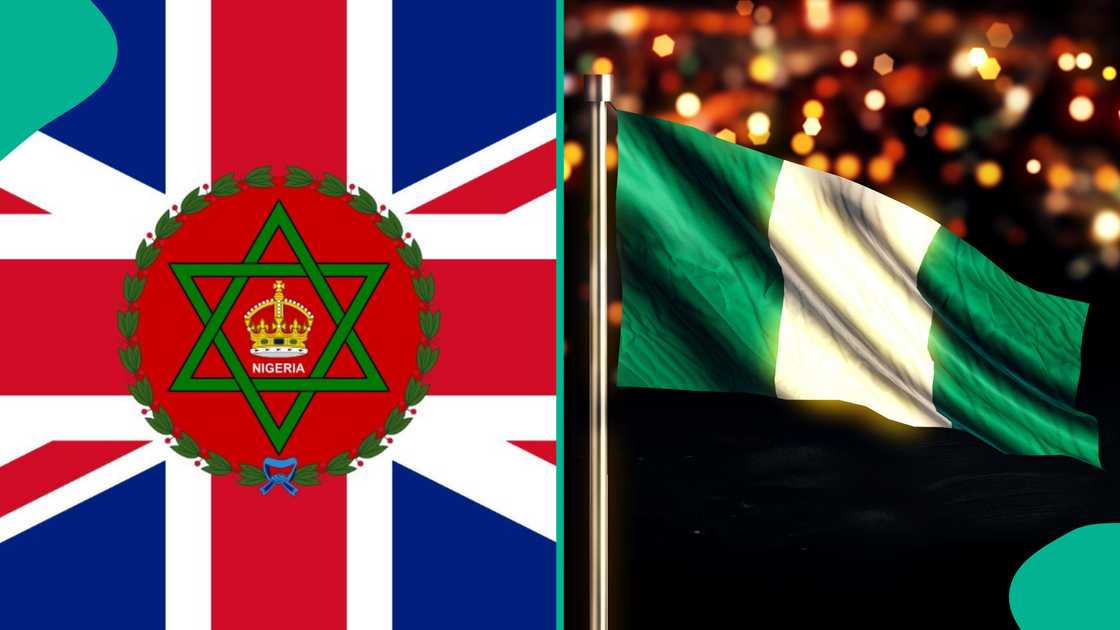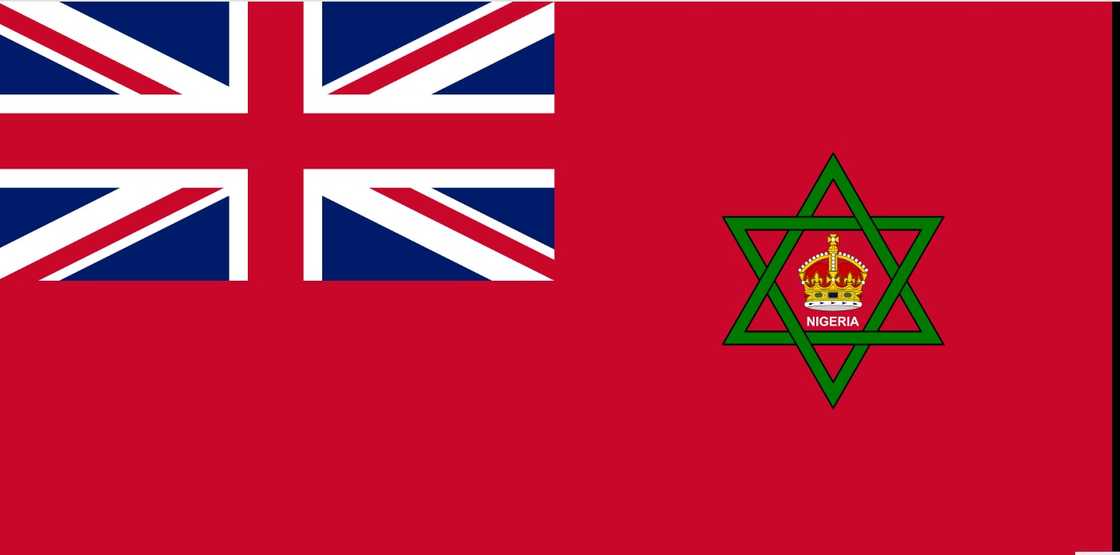Nigeria at 64 in Pictures: The Nation's Flag Before Independence
- As Nigeria celebrates its 64th year of independence, we reflect on the nation's journey and the symbols that have defined its identity
- Before gaining independence in 1960, Nigeria's flag featured a British Blue Ensign with a unique badge symbolising unity
- The colonial flag, designed with a green six-pointed star known as the Seal of Solomon, was replaced by Taiwo Akinkunmi's design in 1960, marking a new era for Nigeria
CHECK OUT: Education is Your Right! Don’t Let Social Norms Hold You Back. Learn Online with LEGIT. Enroll Now!
As Nigeria celebrates its 64th year of independence, it's a fitting moment to reflect on the nation's journey and its symbols of unity and identity.
One such symbol is the flag that represented Nigeria before it gained independence in 1960.

Source: Getty Images
Between 1914 and 1960, Nigeria's flag was a British Blue Ensign adorned with a unique badge.
This badge featured a green six-pointed star, known as the Seal of Solomon, encircling a Tudor Crown, which was later replaced by St Edward's Crown in 1953. Below this emblem, the word "Nigeria" was inscribed in white on a red disc.

Read also
Nigeria at 64: Onyeka Onwenu's Peace Song, Sould Sultan's Motherland, other great songs about Naija
Nigeria’s colonial flag: A historical reflection
This flag was adopted following the amalgamation of the Southern Nigeria Protectorate and Northern Nigeria Protectorate, symbolizing the unity of the newly formed Colony and Protectorate of Nigeria.
The badge on the flag also served as the emblem for the governor-general of Nigeria. In April 1940, former colonial governor-general Frederick Lugard provided insight into the design of the green hexagram on the flag.
He explained:
"The design of the interlaced triangles is I think commonly called Solomon's Seal. I do not know if and when it was adopted as the seal of Islam but it was found on the lid of a very handsome goblet or jug of brass and copper covered with designs, which was captured by the troops when the Emir of Kontagora, the principal slave-raider in Northern Nigeria was defeated. I thought it an appropriate badge for Northern Nigeria and as far as I can remember it was my own suggestion. On amalgamation of North and South it was adopted as the emblem of united Nigeria."
Despite its official status, the colonial flag was not universally accepted. As Nigeria approached independence, a competition was held in 1959 to design a new flag. Taiwo Akinkunmi emerged as the winner, and his design became the national flag of Nigeria in 1960, replacing the colonial emblem.
As we commemorate Nigeria's 64th year of independence, it's essential to remember the symbols that have shaped the nation's identity and the journey towards unity and self-determination.

Source: UGC

Source: UGC

Source: UGC
What is Nigeria's greatest achievement?
Meanwhile, Legit.ng earlier reported that Nigeria celebrates its independence day at 64, and its greatest achievement has been its long democratic rule since 1999.
Okanlawon Gaffar, a political commentator, in an exclusive interview with Legit.ng, gave the opinion while speaking on the 64th independent anniversary of the country.
Proofreading by Nkem Ikeke, journalist and copy editor at Legit.ng.
PAY ATTENTION: Сheck out news that is picked exactly for YOU ➡️ find the “Recommended for you” block on the home page and enjoy!
Source: Legit.ng



